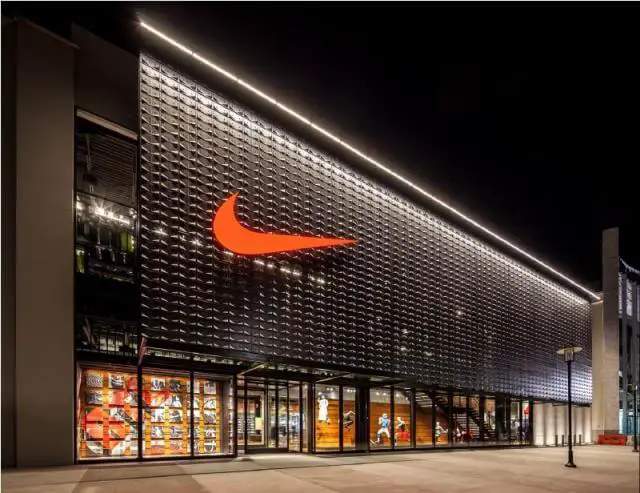Nike Mission and Vision Statement Analysis

Nike mission statement is “to bring inspiration and innovation to every athlete in the world.” This statement focusses on the influence that Nike has in the sports sector. It specially resounds the ability of this company to stimulate and turn athletes into their best versions. In fact, it also hints that this is what athletes who want to be clutch should look out for. Some of the components related to this mission statement include:
- Bring inspiration. To satisfy this component, Nike has been on the front row when it comes to motivating its customers how it knows best – providing them with comfortable footwear and apparel. Additionally, the company understands the importance of looking the part, and this motivates their desire to excel. For instance, its wide range of sportswear gives an impression of what this is exactly all about.
- Innovation. The reason Nike has remained at the top in this game narrows down to its unrelenting clamor for coming up with the most versatile, aesthetically appealing and most of all dependable products. It does this by engaging the most creative minds in its team of experts to advance its innovative agenda when launching any products in the market. In fact, the house of innovations showcases lots of artifacts and facts that prove the commitment of the company to innovations in the sports sector.
- Global presence. In this element, Nike shows that it is a company that wants its presence felt everywhere. The desire to meet this component explains the diversification tactics of the company to include different products targeting athletes across the globe. For instance, Nike has initiated signature initiatives that look to grow sports talents across the globe.
Introduction
The mission and vision statements adopted by Nike reflects exactly what the company has been known for since it started in 1964. Despite the rebranding of the company from what it was originally known for to its current name, one element has stood against all odds, its goal to lead in manufacturing products that bring out the best in athletes. In fact, its popularity, dependence, and preference is evidence that Nike is the ultimate manufacturer of what athletes need to compete at the top level, thanks to the precision and focus of its mission and vision statements.
Fundamentally, the mission statement of a company presents the actions that the management uses to progress the growth of the business. In the case of Nike, the company expresses its limitless strategies to provide its clients with the most creatively designed products that fit all their needs. It works in collaboration with the vision statement of the company, which essentially sets the growth path or direction towards the desired future.
The vision statement by Nike focuses on the extent and scope of influence the company would want to have in the sports sector across the globe. The steady growth recorded by Nike comes down to many other factors, and core values have a central part to play in this. These values are the guiding elements that streamline operations within an organization. Their seamless interaction with the mission and vision statements are the key ingredients that see a company rise to prosperity, something that Nike has been enjoying for years.
| NAME | Nike |
| FOUNDED | 1964 |
| HEADQUARTERS | Beaverton, Oregon, USA |
| SIC CODE | 5661 |
| STATUS | Public Independent Company of NYSE |
| INDUSTRY SECTOR | Sale of sports apparel and footwear |
| EMPLOYEES | 77,000 |
| TRADING SYMBOL | NASDAQ: NKE |
Vision Statement
Nike’s vision statement is “do everything possible to expand human potential.” Although precisely crafted, this statement shows that the company does not limit itself to certain strategies in ensuring it gives its customers the best there is in the world of sports. The picture portrayed by this vision statement is that Nike does not settle for normal, instead, the company goes for the most dynamic, simple, yet incredibly efficient designs with worthwhile impacts on the users. In accordance with this observation, the following characteristics relate to this vision statement:
- Improvement of lives. Nike Corporation is a people-oriented company whose operations targets leaving a positive impact on the people it comes in contact with. The company does this by incorporating objectives that improve societies to run parallel to its primary goals – and these form its corporate social responsibility. For instance, Nike is accredited for leading environmental conservation strategies across the globe, and this is not all. The company is vocal in other social targets as part of its overall mission of bringing the best out of the people it serves.
- Exceeding expectations. If there are companies that have gone out of their way in what they do, Nike would definitely top the list. In all its operations, Nike has proven beyond doubt that it does not simply give what the customer expects. The ever-growing reputation of this company is directly linked to the incredible efforts it puts in manufacturing products whose quality goes over and above the expectations of the market and Nike competitors as well. For years, there has been no comparison to what Nike does, their products are simply extraordinary.
- Expanding human potential. The desire to give its primary customers, the athletes the best footwear, apparel, and other equipment remains the major priority of Nike. It is something that the company has stayed true to for years ever since it was founded. In fact, the company understands the diverse needs of different sportspersons, and in this way, stimulates creativity to produce products tailored to the needs of each category.
Core Values
Nike’s core values include “inspiration, innovation, every athlete in the world, authentic, connected, and distinctive.” These values define what Nike holds dear in its quest to become the best there is. It has the following factors:
- Inspiration
- Innovation
- Every athlete in the world
- Authentic
- Connected
- Distinctive
Nike stresses on the need to maintain top inspiration among its employees to ensure they design and produce innovation-driven products that are not only authentic but also those that meet the needs of all athletes irrespective of where they are in the world. In this way, the company satisfies the demands of its first to fourth values. The company also emphasizes building relationships with everyone it comes in interacts with, something that makes everything about the company unique.
Nike Mission Statement History
Nike’s mission statement has served as a guiding principle for the company since its inception. Over the years, Nike’s mission statement has undergone subtle modifications, but its core focus on inspiration, innovation, and global reach has remained consistent. Let’s explore the mission statement history of Nike, grouping the outlines by year from the most recent to the oldest:
- Present (2023)
“To bring inspiration and innovation to every athlete in the world.“
Nike’s current mission statement emphasizes its commitment to inspiring athletes and leveraging innovation to meet their needs. The term “athlete” is broadly defined to include individuals of all levels of ability and in various sports and activities. Nike’s focus remains on bringing forth cutting-edge products and solutions that empower athletes worldwide.
- 2006 – 2017
“To bring inspiration and innovation to every athlete in the world. If you have a body, you are an athlete.“
During this period, Nike expanded its mission statement by including the powerful phrase, “If you have a body, you are an athlete.” This inclusion aimed to underscore Nike’s inclusive approach and recognize that athleticism is not limited to professional athletes but extends to anyone who engages in physical activity. This modification sought to inspire a broader range of individuals to adopt an athletic mindset and embrace Nike’s products and philosophy.
- Before 2006
“To experience the emotion of competition, winning, and crushing competitors.“
In its earlier years, Nike’s mission statement focused more explicitly on competition and winning.
The company aimed to evoke the emotional aspect of sports and emphasized the desire to surpass competitors. While innovation and inspiration were intrinsic to Nike’s mission even during this period, the emphasis on competition was more pronounced.
It’s worth noting that Nike’s mission statement has evolved to reflect the company’s growth, changing societal values and increasing emphasis on inclusivity. From its beginnings as a footwear company to its current status as a global leader in athletic apparel and equipment, Nike has continuously adapted its mission to resonate with a wider audience while staying true to its core principles of inspiration and innovation.
It is essential to remember that the above outlines simplify Nike’s mission statement history and may not encompass every nuance or change the company has undergone. However, they provide a broad overview of the evolution of Nike’s mission statement throughout the years.
Slogan
Nike’s slogan is: Just Do It
Headquarters
Nike’s main headquarters is in Beaverton, Oregon, United States
References
- Abrahams, J. (2007). 101 mission statements from top companies: Plus guidelines for writing your own mission statement. Ten Speed Press.
- Baetz, M. C., & Bart, C. K. (1996). Developing mission statements which work. Long Range Planning, 29(4), 526-533.
- Bart Baetz, C. K. M. C. (1998). The relationship between mission statements and firm performance: An exploratory study. Journal of management studies, 35(6), 823-853.
- Bartkus, B. R., & Glassman, M. (2008). Do firms practice what they preach? The relationship between mission statements and stakeholder management. Journal of business ethics, 83(2), 207-216.
- Bowman, C., & Ambrosini, V. (1997). Perceptions of strategic priorities, consensus and firm performance. Journal of Management Studies, 34(2), 241-258.
- by William Strange, I. (2012). Interview with Andrew Kilshaw, Chief Learning Officer at Nike Inc. Development and Learning in Organizations: an international journal, 26(3), 32-34.
- Christenson, D., & Walker, D. H. (2004). Understanding the role of “vision” in project success. Project Management Journal, 35(3), 39-52.
- Christenson, D., & Walker, D. H. (2008). Using vision as a critical success element in project management. International Journal of Managing Projects in Business, 1(4), 611-622.
- Collins, J. C., & Porras, J. I. (1991). Organizational vision and visionary organizations. California management review, 34(1), 30-52.
- Collins, J. C., & Porras, J. I. (1996). Building your company’s vision. Harvard business review, 74(5), 65.
- DeLong, M. (2009). Innovation and sustainability at Nike. Fashion Practice, 1(1), 109-113.
- Iversen, N. M., & Hem, L. E. (2008). Provenance associations as core values of place umbrella brands: A framework of characteristics. European Journal of Marketing, 42(5/6), 603-626.
- Klemm, M., Sanderson, S., & Luffman, G. (1991). Mission statements: Selling corporate values to employees. Long range planning, 24(3), 73-78.
- Leuthesser, L., & Kohli, C. (1997). Corporate identity: The role of mission statements. Business Horizons, 40(3), 59-67.
- Nike – About us.
- Pine, B. J., & Gilmore, J. H. (1998). Welcome to the experience economy. Harvard business review, 76, 97-105.
- Smith, J., & Love, P. E. (2004). Stakeholder management during project inception: strategic needs analysis. Journal of architectural engineering, 10(1), 22-33.



Good work. But I think you confuse between Nike’s mission and vision statements. I haven’t looked for their vision but Nike’s mission is what you call its vision statement here, ie, “To bring inspiration and innovation to every athlete* in the world” with the asterisked footnote as: * If you have a body, you are an athlete.
It became difficult to find this mission statement on their site and was hidden away in their training webpage a few years ago, perhaps due to much bad press they got (as their child labour suppliers also had bodies, one could argue?) but has surfaced now very prominently – that surprises me as I thought they were going to change it.